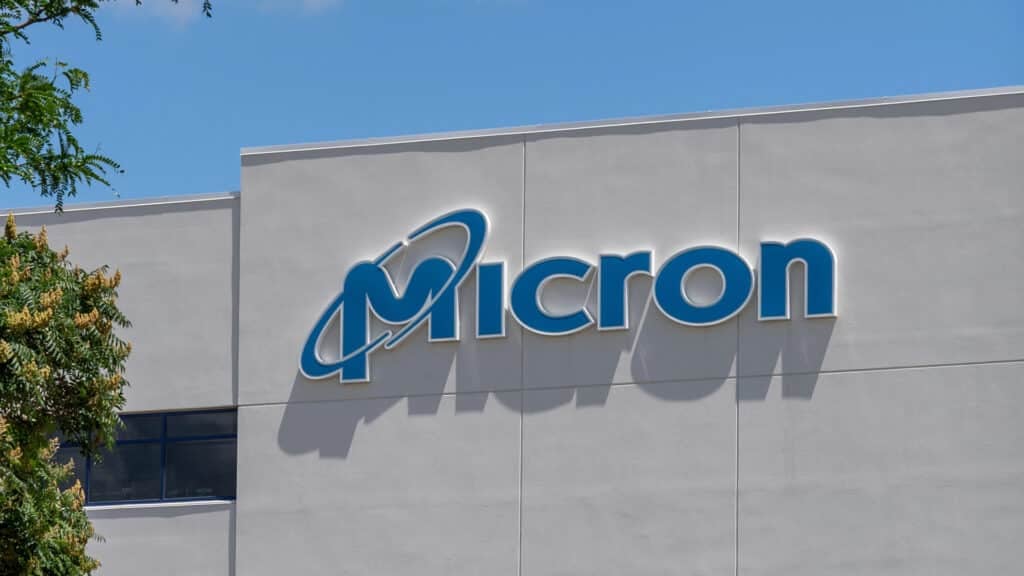In this episode of The 5G Factor, our series that focuses on all things 5G, the IoT, and the ecosystem as a whole, I’m joined by my colleague and fellow analyst, Todd Weiss, for a look at the top 5G developments and what’s going on that caught our eye.
Our conversation focused on:
Nokia Driving Key PON-related 5G/Small Cell Innovations. The recent Fiber Connect 2023 event fully showed why fiber optics plays an essential role in 5G network builds and capabilities. Nokia, for instance, demonstrated its Build America, Buy America (BABA) compliance, 25G PON starter kit aimed at 10Gbp+ service opportunities, its Corteca home connectivity software aimed at monetizing and improving broadband experiences such as hybrid workforce environments, expanded its Network-in-a-box program, and strengthened its manufacturing presence in the US through deals with Sanmina in Wisconsin and Fabrinet in California. We discuss why these moves impact the 5G ecosystem, including Nokia’s 100G PON collaboration with Vodafone.
Ciena’s 5G xHaul Portfolio Syncs up With Key Operator Priorities. In 5G systems, accuracy in frequency, phase, and time synchronization is integral for optimizing RAN performance. We see operators are prioritizing using network timing distribution across their transport infrastructure to complement local Global Navigation Satellite System (GNSS) at cell sites, providing a more resilient and flexible RAN architecture. Plus, we assess why streamlined visualization and management of timing and synchronization capabilities as well as transport versatility that supports network slicing are key to advancing xHaul innovation and broader adoption, and Calix’s ecosystem role in delivering such capabilities.
Calix Mobile Backhaul Portfolio Ready for Prime Time 5G Demands. Given that hundreds or even thousands of smartphones depend on the connection to their base station, we see that mobile operators hold their backhaul providers to the highest levels of performance in the industry. As a result, mobile operators want real-time visibility of circuit performance, increasingly demand bandwidth on demand flexibility, and fail-safe circuits. We delve into why Calix’s portfolio, such as the Calix AXOS E5 Ethernet Service Access Nodes, deliver the Carrier Ethernet 10G and 1G UNI service demarcation and Ethernet aggregation capabilities key to assuring operators can provide premium business and mobile backhaul services with operational efficiency and service assurance.
Watch The 5G Factor show here:
Or Listen to the full audio here:
If you’ve not yet subscribed to The 5G Factor, hit the ‘subscribe’ button while you’re there and you won’t miss an episode.
Disclosure: The Futurum Group is a research and advisory firm that engages or has engaged in research, analysis, and advisory services with many technology companies, including those mentioned in this article. The author does not hold any equity positions with any company mentioned in this article.
Analysis and opinions expressed herein are specific to the analyst individually and data and other information that might have been provided for validation, not those of The Futurum Group as a whole.
Transcript:
Ron Westfall: Hello, and welcome, everyone, to The 5G Factor. I’m Ron Westfall, research director here at the Futurum Group, and I’m joined here today by my distinguished colleague, Todd Weiss, our team analyst for matters related to communication networks, for instance. Today, we’re going to dive into our show called The 5G Factor, which is all about the 5G ecosystem, and the IoT, and the major developments that have caught our eye. So Todd, welcome back to The 5G Factor, and thank you for joining today. What have you been doing between the episodes? How have you been bearing up?
Todd R. Weiss: Oh. I’m just studying, Ron, so that I can help you and work with you on these. This is a great feature. I’m really enjoying working with you on these.
Ron Westfall: Wonderful. Thank you for the shout out there, Todd, and with that, let’s queue up. Now, recently the Fiber Connect 2023 event concluded in Orlando, and I think there is several major takeaways from the event. That is fiber plays an essential role in how 5G is built out and how it’ll evolve not only today, but certainly over the next two-years-plus, into the foreseeable future, quite simply. And so the question is, why is fiber so essential to 5G? As a little background, fiber optic technology has long been used in long haul networks, and due to its high performance capabilities over long distances, fiber can travel as far as 40 miles without losing signal strength. So this is remarkably an improvement over, for example, copper technologies.
Todd R. Weiss: Oh yeah. It’s a huge benefit. That’s why we’re seeing it in neighborhoods being spread out all over. We see them in the neighborhoods everywhere.
Ron Westfall: Well, right on. I think people will build and install fiber wherever possible. And so that’s basically some of the background here, but in addition, it’s also about 5G wireless small cells and how they’re interrelated with the fiber network. To better understand it, we can look at it in physiological terms, that is 5G functions are basically the capillaries of an overall wireless network. What I mean by that is, again, the small cells that are distributed throughout a city will basically onboard the traffic to the fiber backbone, to, basically, the traffic that is the veins and arteries, if you will, of the overall journey of that traffic. And to further-
Todd R. Weiss: Great analogy. Great analogy.
Ron Westfall: Yeah. Thank you. Thank you, Todd. To further contextualize it, according to a study by Deloitte, only 11% of overall traffic is actually carried on the wireless network, but the remaining 89% is transported across the wire line network. And so you could see why, right away, why fiber is so essential to 5G success. In fact, Deloitte also anticipates that $150 billion in investment will be needed in fiber infrastructure alone to ensure that 5G networks are deployed properly, but, more importantly, are optimized to handle the traffic demands and all the other applications that will onboard, particularly as operators code over to 5G standalone.
Todd R. Weiss: Of course, that figure’s going to rise.
Ron Westfall: Oh yeah. No. I think that’s definitely a snapshot, and yes, as we discussed previously, the operators are dialing back, at least in the US, the major ones, some of their CapEx remainder of this year and also to 2024. However, that does not deny that that investment will again rise further out in the future. But also, a lot of fundamental work needs to be done to really get the 5G networks ready for prime time.
Todd R. Weiss: Yeah.
Ron Westfall: At that event, Nokia, I believe, stood out. For example, Nokia demonstrated that it’s compliant with BABA, that is Buy America, Build America requirements that when Congress passed some of the recent funding bills for digital demand reduction, for example, that is looking at ways to meet underserved or unserved markets with broadband builds. And so definitely, they’re interested in having products that are built in the US to meet these US broadband demands. That’s only natural.
But in addition to that, Nokia introduced a 25G PON starter kit that’s aimed at 10-gig-plus service opportunities. Also, they unveiled its Corteca home connectivity software aimed at monetizing and improving the overall broadband experience. This is particularly relevant, for example, to hybrid workforce environments. Now that more and more people are working from home, clearly, the organizations need to have not only high-speed connections to the home that is now part of their workforce, but also have security assurance and so forth built in. This is where fiber can make a huge difference.
Also, they expanded their network-in-a-box program and also strengthen their existing manufacturing presence in the US through deals with Sanmina in Wisconsin as well as Fabrinet in California. And so that’s a lot right there, but in addition to that, Todd, what do you see Nokia doing to really up their fiber game when it comes to 5G builds?
Todd R. Weiss: Well, those are great points, but Nokia and Vodafone began, in 2021, to trial PON technology, passive optical network. This delivers record speeds of up to a hundred gigabits a second on a single PON wavelength. This is 40 times faster than widely deployed gigabit PON technology and 10 times faster than the most widely-advanced fiber networks in operation today. That’s a giant jump. That’s a giant performance jump. So this trial, to me, shows that there are no limits to fiber networks. The amount of performance that we’re going to get out of these, I don’t think there’s any limit to it. It’s just going to keep getting better and faster. Their huge capacity-
Ron Westfall: Oh. Yeah.
Todd R. Weiss: Yeah. Their huge capacity potential and wide availability can transform fiber into a unifying infrastructure that connects everything, consumers, businesses, smart cities, 5G cells, and more. One of the things that we don’t talk about that much is how fiber can bring service to places that aren’t getting service, rural areas, remote areas. I think that fiber could be the answer in these places, finally. We’ve been looking for this for, what, two decades, a decade. So I think this is a big deal.
Ron Westfall: Oh. I agree unequivocally. Can you say future-proof? Because as you can see, right, now the industry in the US, at least, is certainly focused on, for example, 25G PON. But knowing that there is 100G PON capabilities further out definitely, I think, gives more confidence in investing in the PON infrastructure that is, quite simply, essential to the ability of 5G to serve these difficult to reach areas. This is all, I think, coming together more. I think, again, to your point, the BEAD funding that Congress authorized will help drive some of this, certainly, over the next few years. I agree accordingly, and it’s-
Todd R. Weiss: Yeah, and this is a standard. I mean, there’s so many other disparate systems. Every provider wants to work on fiber, so this is like a unifying theme that’s going to make it finally happen, I think. I don’t think that’s unreasonable to think that.
Ron Westfall: Sure. No. I think that’s an excellent point. It’s the flexibility of fiber. At least some of these fiber platforms can handle multiple capabilities on a single unit or a single platform. That includes, certainly, 5G small cell backhaul, but in addition to business-to-business connections and a host of other requirements. I see that not only is Nokia putting its hat into the ring here, but at that Fiber Connect event, I saw Ciena come out with some, I think, interesting capabilities.
To be specific, Ciena is continuing to develop its xHaul portfolio to meet what I think are some very stringent timing and synchronization requirements in the fiber backhaul network. As a little more background, 5G systems require accuracy and frequency, phase, and time synchronization to, quite simply, optimize RAN performance. As a result, we’re seeing operators are now looking at more and more ways to leverage network timing distribution across their transport infrastructure to compliment, for example, local, global navigation satellite system or GNSS at cell sites. That, quite simply, yields a more robust RAN architecture.
Todd R. Weiss: Yeah, yeah. Absolutely.
Ron Westfall: Yes, and as such, Todd, the accuracy and resilience challenges are further spiced by the need to, of course, minimize costs and investments. And so that is compounded by the fact that every operator out there, with maybe a few greenfield exceptions, had to deal with legacy non-time-aware third party network segments and also the ability to really integrate this into a fully-managed view. And so that clearly is a challenge, and how Ciena’s responding to that is, I think, very insightful and very important.
For example, at their R&D labs in Ottawa, we see Ciena showcasing xHaul portfolio advancements. This is, I think, again, meeting that timing and synchronization priority that operators are definitely very keen on, they’re very hot on. As such, Ciena is demonstrating a streamlined approach to deploying and managing timing distribution across a 5G network, and this includes G.8275.1 and G.8275.2 interworking capabilities as well as assisted partial timing support. To top it all off, Ciena submitted pre-standard Assisted Full Timing Support failover schemes, and that, I think, can put operators at a better position to, quite simply, make their advanced timing capabilities all of the more ready for 5G prime time, especially, again, as 5G cuts over to standalone capabilities and, just a little further out, adopt 5G advanced capabilities.
I think to round out my observation here, key to advancing these xHaul capabilities is ensuring that the operators have an easy way to visualize all this, and this is where Ciena’s MCP, that is the domain controller, allows them to be able to implement multi-layer network management. And so with that, Todd, what else do you see that Ciena’s doing that is really standing out?
Todd R. Weiss: Well, those are great points, but the other thing I think is really a big deal is their flexibility. The flexibility to adapt and support the RAN evolution is a key design driver. Without flexibility, this is not going to grow. To be able to have service providers be able to do whatever they need to do, wherever they need to do it, with anything they need to do is huge. That’s the thing that will help this grow to become something that just is a huge, and even … That is something that will help this grow to be absolutely everywhere around the world.
I think that transport flexibility continues to be top of mind for mobile operators. It’s absolutely necessary. It’s absolutely critical. Transport networks’ ability to adapt to new requirements, and they’re coming, they’re always going to come, and thus enable RAN evolution, is seen as critical in the search for better performance at lower costs. Operators are especially looking for high 10 gigabit ethernet or up to 25 gigabit ethernet port densities to accommodate new spectrum introduction, all in compact and energy efficient platforms that minimize power and space in dense cell site environments.
It’s like transistors. It’s going to get smaller and smaller and denser and denser. That’s the way technology works even here. Slicing readiness is also mentioned as critical to pave the way to future end-to-end slicing deployments, making slicing easier, better is going to be a huge thing. Then, openness of transport platforms and versatility to support any combination of fronthaul, midhaul, backhaul, and preferably the ability to converge even non-mobile traffic in the same router, those are things that are also factors being identified by many as highly valuable to future-proof their transport designs. This is a big deal. So Ciena’s xHaul portfolio, it’s positioned solidly to accelerate operator RAN evolution. This is a time we’re going to remember. We’re going to look back at this, I think, and mark when this change happened, and I think it’s going to be very influential.
Ron Westfall: Oh. I agree wholeheartedly, Todd. I think you brought out two excellent points. For example, slicing readiness, T-Mobile CTO John Saw has come out and said, “We’re ready. Let’s do this, because we’ve been talking about it for a while.” And so this, I think, is a true execution point, that is here is a milestone in the industry that a major US operator is ready to do this slicing readiness. Also, what I really like is your point about open access networks. I think we’re getting closer, at least in the US, and this has already been implemented in many parts of Europe, is that different operators will compete to use the same network to offer services to customers out there.
That, of course, is healthy for competition, and we have the same kind of thing here in Texas when it comes to energy, for example. So why not broadband services? So this is, I think, coming together more, and these are clearly demonstrating that companies like Nokia and Ciena are definitely helping advance 5G network capabilities nationwide. With that in mind, Calix Mobile Backhaul Solutions, I think, are definitely meeting many of these very top demands. For example, we know small cells are proliferating out of necessity, traffic is growing dramatically, and, again, that competition’s intensifying in terms of winning those 5G service dollars.
Todd R. Weiss: Oh. Yeah.
Ron Westfall: To meet these changing requirements, I think the networks, quite simply, have to always be on. They have to provide the unprecedented visibility and also, quite simply, deploy quickly. We can’t have these 12-month deployment cycles from the past. And so with that in mind, I think what Calix is doing with this solutions is really meeting some of these key requirements, let alone pain points. As we know, hundreds or thousands of smartphones depend on the connection to the base station, and this is where the mobile providers use backhaul capabilities to ensure the overall service qualities.
In fact, now, we know that mobile operators require real-time visibility into how the circuit is performing, and this also includes bandwidth on demand. That also means that the circuit can never fail, quite simply, and as a result, what we’re seeing is that service providers are planning to use E5-308 and the E5-520 products by Calix along with their existing equipment to collect Y.1731 reports and also use that in combination with Calix’s service verify capabilities, again, that full-time visibility. That also uses predictive analytics to alert them when they’re approaching all important service level agreement thresholds as well as ensuring the overall integrity of Calix’s mobile backhaul portfolio. And so with that in mind, Todd, from your perspective, what else do you see from the Calix mobile backhaul portfolio that is exemplary?
Todd R. Weiss: Funny you should ask. Calix has some products that are absolutely going to help in this area. The Calix AXOS E5 Ethernet Service Access Nodes, they integrate carrier ethernet 10G and 1G UNI service demarcation and ethernet aggregation capabilities to deliver premium service and mobile backhaul services with operational efficiency and service assurance. These are doing the hard work and making it look easy. Designed for the demanding business services market, the E5-500 and the E5-300 products deliver more services to more subscribers, enabling the fastest time to revenue, and for service providers, this is exactly what they need and want.
For high-speed internet, for dedicated internet access, metro ethernet, private lines, ethernet land, power over ethernet, precision timing, and more, whatever they need, these products will deliver it, which is just a huge thing for service providers. They’re all looking for the competitive edge over the others, and so bringing in this kind of equipment is going to help them. Whatever their customers call for, the AXOS E5 business products can exceed their expectations. I really do think, Ron, these are going to help make a lot of improvements in the industry. I really do.
Ron Westfall: I agree wholeheartedly again, and I think what’s also important to note, that Calix isn’t resting on its laurels. For example, they recently worked with ALLO Communications to secure sustainability funding for that all-important service provider partner. So it’s not just only about ensuring the integrity of the overall 5G network as well as the overall fiber network, but also fulfilling society-wide objectives, such as advancing sustainability goals, improving the energy efficiency, and thus helping the overall environment. So this is all coming together. This is something that, again, is having impact on all of us and not just, quite simply, what the service providers are requiring in order to even have Calix’s technology considered in the evaluation phases. With that positive note, Todd, thank you so much again for joining The 5G Factor. Any concluding thoughts?
Todd R. Weiss: No. Just thanks for having me again. I enjoy working with you and doing these. It’s always a good discussion, Ron.
Ron Westfall: You bet, and to our viewing audience, thank you so much for taking time to join our webcast. With that, we look forward to seeing you on our next 5G Factor, and have a great 5G day, everyone.
Todd R. Weiss: Thank you. See you later.
Other insights from The Futurum Group:
5G Factor: Intel, Marvell, Ericsson, Samsung, Nokia Advance vRAN
Calix: Decisive Player in ALLO’s New Sustainable Financing
Nokia Brings Fiber Manufacturing to the US to Advance BEAD Vision
Author Information
Ron is an experienced, customer-focused research expert and analyst, with over 20 years of experience in the digital and IT transformation markets, working with businesses to drive consistent revenue and sales growth.
He is a recognized authority at tracking the evolution of and identifying the key disruptive trends within the service enablement ecosystem, including a wide range of topics across software and services, infrastructure, 5G communications, Internet of Things (IoT), Artificial Intelligence (AI), analytics, security, cloud computing, revenue management, and regulatory issues.
Prior to his work with The Futurum Group, Ron worked with GlobalData Technology creating syndicated and custom research across a wide variety of technical fields. His work with Current Analysis focused on the broadband and service provider infrastructure markets.
Ron holds a Master of Arts in Public Policy from University of Nevada — Las Vegas and a Bachelor of Arts in political science/government from William and Mary.










